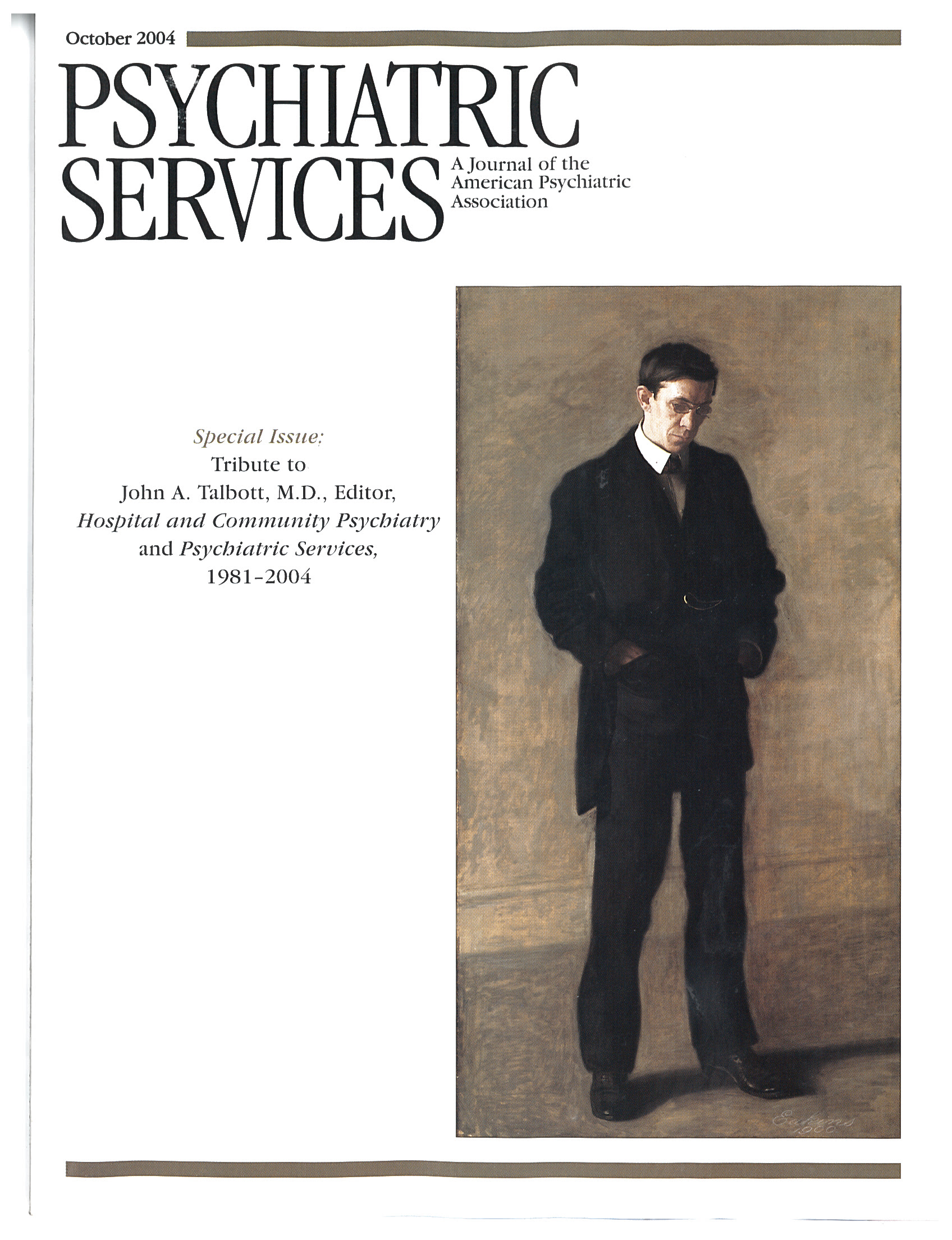As part of this special tribute to John Talbott, selected books are reviewed with a goal of identifying how well Talbott portrayed the field at the time, how prophetic his work was, and what it can still teach us. Of all the interesting choices I was offered, it was immediately obvious that I should select Future Directions for Psychiatry, which purported to project what the field would be like in ten to 15 years.
John Talbott is known for his intelligence, insight, and chutzpah. It appeared that to take on such an ambitious project would require all three capacities to be fully and synergistically functional for the prophecy to stand the test of time. I had my doubts and delighted at the prospect of tickling my esteemed colleague's ribs.
Briefly, the project arose from an idea John had during his term as APA president. He conceived of and stimulated a process involving a collective effort of dozens of psychiatry's academic, research, policy, and organizational leaders over a three-year period to identify the challenges for and needs of the profession. This process culminated in a conference in 1987 to review and respond to working papers on key areas of focus: science, clinical practice, education, financing issues, and the profession's organizational needs.
Having the retrospective advantage of knowing that this project was mounted at the dawn of a period marking dramatic changes in all these areas, I was convinced that I would be able to tweak John's nose a bit; that he and his colleagues couldn't possibly have been able to predict the long, strange trip it's been to come from the mid-80s into the 21st century.
Future Directions for Psychiatry was written before the most significant advances in imaging and genomic research revealed the treasures of the brain's biochemical, structural, and functional subtleties; before the newest generations of medications and the aggressively proprietary pharmaceutical industry became such dominant positive and negative influences on psychiatry; and before managed care came to be such a prominent and powerful force in shaping the nature of clinical practice. How could John and his fellow seers have any idea of what was in store for psychiatry and its patients? Chutzpah, indeed!
Well, I was wrong.
Sure, I could take a cheap shot and criticize the politically incorrect references to "the mentally ill" and other non-person-first ways of describing the recipients of psychiatric services, a dead giveaway (as is the tacky postmodern cover graphic) that this is a document from a previous decade. More seriously, there is no mention of the incipient controversy over seclusion and restraint; the liability and professional image concerns associated with sexual involvement with patients; the profound impact of various forms of trauma on psychopathology, especially the modern scourge of domestic terrorism; and (oops!) no apparent knowledge of the coming battles over scope of practice and prescribing privileges for psychologists (or nurse practitioners for that matter). Although there is clear anticipation of the advent and promise of newer medications, there is no mention of ethnopharmacology or alternative pharmacologic treatments. More important still, the book's contributors miss the boat on the pharmaceutical industry's Faustian bargain with the profession, potentially leading to our loss of soul—or, at least, respectability—within the universe of those who care about the psychosocial part of our comprehensive and holistic identity as health professionals who care for the whole person.
But these are minor shortcomings (with the possible exception of the failure to anticipate the two-edged sword of the relationship with the drug manufacturers) compared with the nails that these authors manage to hit on the head. How well they describe the economic forces that would bring us prospective payment and managed care's practice-altering policies, as well as the economic impact on public-sector services, training, and research. They successfully pegged the advances that might occur with imaging and genetic research. They clearly define psychiatrists' leadership and clinical roles and the interdisciplinary relationships that would be required for more effective and better-quality patient care. They anticipate the threats to public and teaching hospitals and the need to increase the numbers of competently trained and dedicated psychiatrist researchers.
Several of the many other relevant points included in their blueprint are the need for more attention to public-sector patients and community-based practice organizations; the need for science-based approaches to treatment, including practice guidelines, to improve treatment effectiveness and to reduce costly variations in practice; the need to anticipate the overwhelming growth in scientific knowledge and to prepare psychiatric trainees to be effective lifelong learners; the importance of improving our collaboration with our primary care colleagues; and the need for psychiatrists to become involved with policy, including working with Congress and other levels of government
A parenthetical observation is that Talbott deserves credit for choosing Howard Goldman to coauthor the excellent pivotal essay, "The Future Environment for Psychiatry," which forcefully and effectively sets the stage for the following chapters with specific recommendations on the focus areas listed above. This future editorial heir-apparent for this prestigious journal hinted at the valuable contributions he would make over the next 15 years, including his work on the landmark Surgeon General's report on mental health and the recent report of the President's New Freedom Commission.
Like courageous guides into the unknown, looking into a cavernous and perilous tunnel that leads to the future, John Talbott and his colleagues used the meager lamp of current evidence and common sense to fuel a vision that illuminated the path we were to tread. Their effort deserves a belated visit for those who missed this important policy document, if only to instruct us on how to look ahead to our profession's next 15 years. We should be so bold and prescient.

